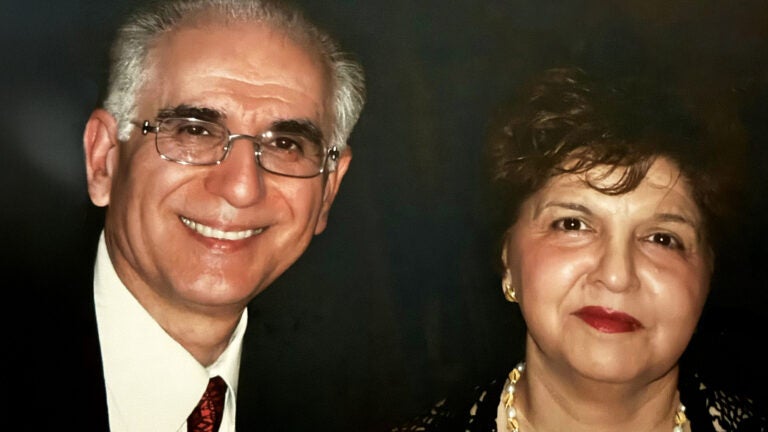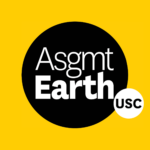
$15M gift from alumnus fuels sustainable energy research at USC Dornsife’s Loker Institute
In brief:
Alumnus Massoud Arvanaghi and his wife, Ferial Arvanaghi, donated $15 million to the USC Loker Hydrocarbon Research Institute based at the USC Dornsife College of Letters, Arts and Sciences.
Funds will support the Loker Institute’s research advancing sustainable energy and carbon capture solutions through three endowed funds that will support graduate students and postdoctoral fellows.
The gift honors USC Dornsife researchers Surya Prakash and the late George Olah, who won the 1994 Nobel Prize in Chemistry — both important figures in Arvanaghi’s life.
An alumnus of the USC Dornsife College of Letters, Arts and Sciences has donated $15 million to the USC Loker Hydrocarbon Research Institute, based at USC Dornsife, which explores new ways to mitigate global warming by building on foundational research in chemistry.
The gift from Massoud Arvanaghi ’82 and Ferial Arvanaghi will significantly expand the Loker Institute’s ability to develop new and efficient sustainable energy storage solutions by establishing three endowed funds to support graduate students and postdoctoral fellows. Massoud Arvanaghi conducted research at the institute while earning his PhD in chemistry and later as a postdoctoral fellow.
“Massoud and Ferial Arvanaghi’s extraordinary generosity to USC and the Loker Institute is helping us advance sustainable energy technologies that will serve all humanity,” USC President Carol Folt said. “I’m grateful for their dedication both to expanding chemistry research and to training the next generation of highly skilled scientists.”
Through discoveries that advance the development of clean fuels, efficient energy conversion and storage, and carbon capture technologies, Loker Institute researchers unlock opportunities to shape a more sustainable economy and a healthier natural environment.
Transformative gift honors chemistry innovators
Two of the $5 million funds are named in honor of USC Dornsife Distinguished Professors: G.K. Surya Prakash and George A. Olah.
The late Olah joined USC Dornsife’s Department of Chemistry in 1977, where he remained until his death in 2017. His revolutionary work on “superacids” and carbocations — ions with a positively charged carbon atom — earned him the Nobel Prize in Chemistry in 1994.
Prakash, Distinguished Professor of Chemistry and Chemical Engineering and Materials Science at USC Dornsife, holds the George A. and Judith A. Olah Nobel Laureate Chair in Hydrocarbon Chemistry. He is the Loker Institute’s director.
The Prakash and Olah funds, along with the $5 million Massoud Arvanaghi, PhD and Ferial Arvanaghi, MS Endowed Fund, will ensure generations of students and postdoctoral fellows can conduct their research at the Loker Institute, said USC Dornsife Interim Dean Moh El-Naggar.
“There has never been a more crucial time to invest in foundational research focused on sustainable energy and carbon capture,” said El-Naggar. “This is also a special gift because Massoud and Ferial chose to specifically support young scientists — PhD students and postdocs — who are key to the institute’s success.”
“Accidental chemist” earns PhD at USC Dornsife
Massoud Arvanaghi says he fell into chemistry somewhat by accident. When he applied to Arya-Mehr University of Technology in Tehran, often called the “MIT of Iran” (and since renamed Sharif University of Technology), he says only a handful of the 100,000 applicants had the opportunity to specify the subjects they were most interested in.
Arvanaghi included chemistry on his list and was admitted with immediate placement in that program.
“It wasn’t fun for me in the first year,” he admits. “I really struggled with whether I wanted to stay or not.”
But Arvanaghi persisted, in part due to the influence of “one of the best advisors at the university, who really made me understand how valuable chemistry is.” His interest grew, and in time he became a teaching assistant in a graduate student laboratory.
As he approached graduation in 1978, his advisor encouraged him to continue his chemistry studies and said Olah would be a great mentor.
Arvanaghi, sensing it might be wise to leave an increasingly volatile Iran as it approached the 1979 Islamic Revolution, applied to several schools in the United States, including USC, where Olah had just moved his lab.
As acceptance letters began to come in, Arvanaghi waited anxiously for USC’s, and with the deadline to choose a program looming and no word from his top choice, he feared he would not be joining the Trojan Family.
When USC’s letter finally arrived with the good news, he immediately headed to Los Angeles, where he joined Olah’s lab and met Prakash, who had come to USC Dornsife with Olah just a few months earlier, earning his PhD and beginning a postdoctoral fellowship.“Prakash was the one who took me to the lab and gave me a bench,” Arvanaghi says.
The two became great friends: “In my graduate student years, I used to cook Indian food and Massoud would come and eat in my apartment,” says Prakash. The pair would also become prolific laboratory collaborators, publishing numerous papers together while focusing on work that would help earn Olah the Nobel Prize.
Chemistry in lab and in life
At USC, Arvanaghi studied methods of stabilizing carbocations — short-lived, highly reactive molecules that briefly form during certain chemical reactions. For decades, scientists debated their existence because they were so difficult to detect.
Under Olah’s guidance, Arvanaghi, Prakash and other scientists discovered that certain carbocations, when stabilized using highly acidic solutions known as “superacids,” can have some unusual structures and bonding. This breakthrough allowed them to observe and confirm the existence of these elusive molecules, resolving a major scientific debate and helping to secure Olah’s Nobel Prize.
After earning his PhD from USC Dornsife, Arvanaghi continued his research as a postdoctoral fellow at the Loker Institute for three years. He then worked as a chemist for several companies before landing at a small manufacturer of nutritional supplements, food flavorings and food coloring agents in 1990.
Not long after, Arvanaghi met and began dating Ferial. Their connection extended beyond the personal — Ferial holds a master’s degree in polymer science from the University of Akron, making their chemistry both romantic and professional.
The couple married in 1993 and just a year later purchased the small food company where Massoud worked. Over the next two decades, they turned it into a thriving, multimillion-dollar business before selling it to International Flavors & Fragrances Inc. in 2016.
Today, the couple holds leadership roles in another entrepreneurial venture launched by Ferial in 2002 — Qualimax LLC, an analytical testing laboratory near their New Jersey home. Ferial serves as managing director and Massoud as scientific director.
Chemistry protégé honors Nobel laureate George Olah
With their gift, Massoud says he’s particularly proud to honor Olah and Prakash’s profound impact on his life and career, while also helping to create a welcoming home and safe space for students and postdocs to thrive at USC.
“I came here as a graduate student with nothing,” he says, expressing gratitude to Olah and Prakash for helping him settle in, find jobs on campus and even overcome bureaucratic issues with his student visa and residency.
“I’m really trying to give something back — a thank you to everyone at USC who gave me the opportunity.”